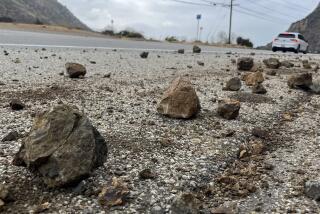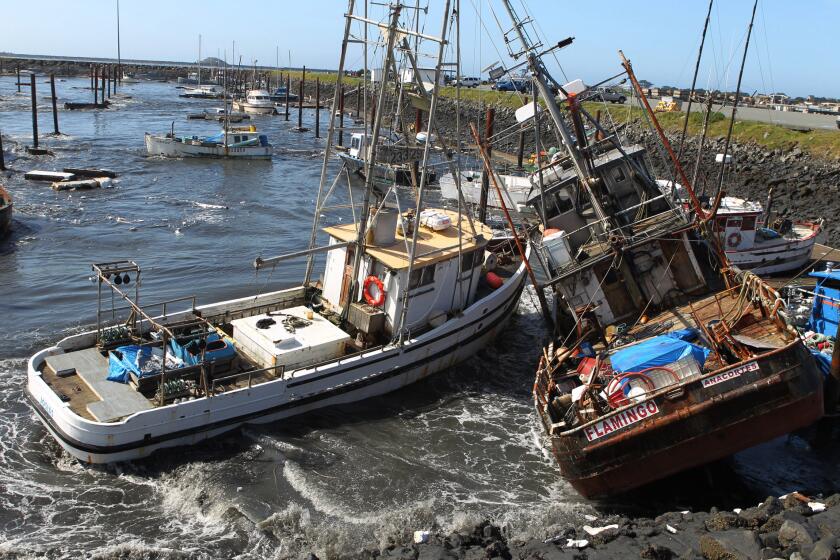Earthquake Kits
- Share via
Earthquake preparation is an ongoing project, but needn’t be tedious. A rule of thumb is to check or replace supplies when clocks are changed to or from daylight saving time, twice a year. And when assembling a survival kit, don’t forget about food and water for pets.
How Much?
Recommendations vary as to the appropriate amount of emergency food and water to store. Many experts advise one gallon of water per person per day for three to seven days. Also store enough food for the same period of time.
Storing Supplies
Use a large container such as a footlocker or 30-gallon trash can, and label each food and water item with the date of purchase or the last date it should be used. Place the container in a cool accessible place, and raise it off the ground.
Shelf Life
3 months
6 months
1 year
Top
Batteries, with tester
Flashlight
Portable radio
First aid kit
Middle
Food and water for pets, manual can opener, dry food (pasta, rice)
Instant food, water, purification tablets
Canned food
Bottom
Blanket
Tarpaulin
Extra clothing, shoes
Premoistened towelettes
Items for personal hygiene: toilet tissue and heavy-duty plastic bags for disposal
Additional Supplies
These are kept separate from the emergency kit in a spot where they can be easily located.
Extra batteries stored in refrigerator to last longer
Spare eyeglasses, contact lenses
Fire extinguisher
Wrenches to turn off gas and water
Alternate cooking methods: barbecue or camping stove (with charcoal, propane or white gas supply)
Tools: ax, hammer, crowbar, rope
Tent and sleeping bag
Work gloves, hard hat
Information
The Southern California Earthquake Center has produced a highly regarded handbook, “Putting Down Roots in Earthquake Country,” that provides information on the risks of earthquakes and how to help prevent damage from them in homes and businesses. The center will sell a minimum of 10 copies through mail order at a cost of $1 each, with discounts available for nonprofit companies. For ordering information, call (213) 740-1560. Single copies of the booklet can be obtained free in several local public libraries. The entire booklet is also available on the Internet at
https://www.scecdc.scec.org/eqcountry.html.
The Red Cross offers classes in earthquake preparation. Call a local chapter for information.
More to Read
Sign up for Essential California
The most important California stories and recommendations in your inbox every morning.
You may occasionally receive promotional content from the Los Angeles Times.










